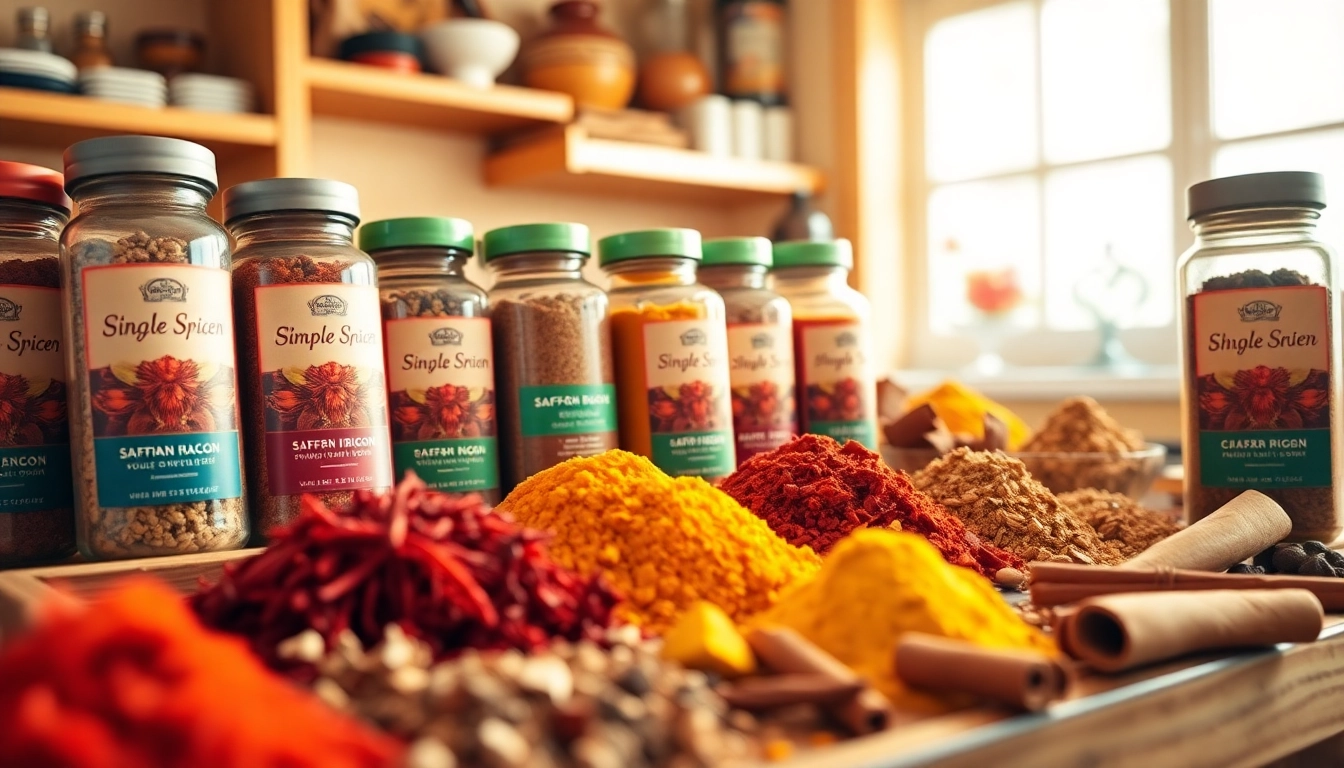Understanding Single Origin Spices
Defining Single Origin Spices
Single origin spices are those sourced from a specific geographic location, often a single farm or region, noted for its unique climate and soil conditions that enhance the spice’s flavor, aroma, and overall quality. Each batch carries a distinct character reflecting its origin, culture, and the farming methods utilized. This contrasts with blended spices, which may contain ingredients from multiple sources, potentially diluting individual characteristics.
The Importance of Sourcing
Sourcing is crucial in the spice industry as it directly impacts flavor and quality. Sourcing spices from a single location ensures that consumers can experience the true essence of that region’s agricultural strengths. Farmers often implement specific techniques and traditional practices that have been passed down through generations, which can greatly affect the spices’ taste and potency. Additionally, single origin sourcing supports local economies and sustainable farming practices, creating a symbiotic relationship between growers and consumers.
Characteristics of Quality Spices
Quality single origin spices possess several key characteristics:
- Freshness: The best spices are harvested and processed quickly to maintain their essential oils and flavor compounds.
- Aroma: High-quality spices emit robust and fragrant aromas that indicate their freshness and origin.
- Color: Vibrant colors are a hallmark of premium spices, signifying high levels of essential oils and antioxidants.
- Flavor: The taste of quality spices is intense and complex, enhancing the flavors of the dishes they are used in.
- Traceability: Quality spices often come with an assurance of their origin, allowing consumers to understand their sourcing journey.
Health Benefits of Single Origin Spices
Antioxidants and Nutrients
Single origin spices are not only flavorful—they are also nutrient-dense. Many spices are rich in antioxidants, vitamins, and minerals that contribute to a healthy diet. For instance, turmeric contains curcumin, known for its anti-inflammatory properties, while cinnamon is praised for regulating blood sugar levels. The high essential oil content in fresh spices also provides medicinal benefits that may support overall health.
Natural Remedies from Spices
Throughout history, spices have been used in various cultures as natural remedies. For instance, ginger is often utilized for its digestive health benefits, and chili peppers may promote metabolism and circulation. By selecting single origin spices, consumers can be assured they are receiving the full therapeutic effects of their ingredients, as they retain their properties better when minimally processed.
How They Enhance Wellness
Integrating single origin spices into daily meals can enhance wellness in numerous ways. Beyond their nutritional value, these spices can add depth and flavor to dishes, making healthy eating a more enjoyable experience. Furthermore, certain spices may help to balance mood, reduce stress, and even improve cognitive function. The act of cooking with vibrant, fresh spices can also be uplifting, providing a sensory experience that contributes to mental well-being.
Popular Types of Single Origin Spices
Top Culinary Choices
Several single origin spices have gained popularity among culinary enthusiasts. Some of the most notable include:
- Sumac: With its tangy, lemony flavor, sumac from the Middle East has become a favorite in salads and marinades.
- Fennel Pollen: Known for its unique sweet and savory profiles, fennel pollen from California takes center stage in various herbal blends.
- Vanilla: Single origin vanilla from Madagascar differentiates itself with its deep, rich flavor, making it a staple in desserts.
- Saffron: Harvested from specific regions, such as Iran, saffron is renowned for its culinary and medicinal virtues, in addition to its vibrant color.
Regional Highlights
The diversity of single origin spices corresponds to their geographic sources. For example,:
- India: Home to a plethora of spices, from cardamom to asafoetida, India offers flavors that are essential in curry and various traditional dishes.
- Mexico: Contains varieties like chile de árbol, which provide heat and flavor to foods, exemplifying the nation’s rich culinary heritage.
- North Africa: The region’s spices, such as ras el hanout, blend many single origin spices, showcasing the complexity of their local cuisine.
Unique Flavor Profiles
Each single origin spice carries its distinct flavor profile shaped by local climate and soil. For instance, the robust and earthy flavor of Ceylon cinnamon differs from the more common cassia cinnamon, emphasizing the importance of understanding spice origins. Similarly, the peppercorns from Kerala have a strong, pungent flavor compared to those grown elsewhere, making them preferred choices for certain dishes.
How to Use Single Origin Spices
Culinary Incorporation
When using single origin spices, understanding their unique flavors and best applications is key:
- Flavor Base: Many spices can serve as a base for flavor—consider starting a dish with sautéed onions and spices for depth.
- Finishing Touch: Use spices such as sumac or za’atar as a finishing touch to add brightness and contrast.
- Infused Oils: Create infused oils by using single origin spices to enhance dressings or marinades.
Pairing Suggestions
Pairing single origin spices effectively with other ingredients can elevate your dishes. Here are some tips:
- Turmeric: Pairs well with black pepper and fats, which help absorb curcumin.
- Cinnamon: Complements sweet and savory dishes alike; try it with meats or in desserts.
- Cumin: Works alongside coriander and is a staple in Middle Eastern and Indian cuisines.
Storage and Preservation Tips
To maintain the freshness and potency of single origin spices, proper storage is vital:
- Keep Dry: Store spices in a cool, dry place in airtight containers to prevent moisture absorption.
- Avoid Light Exposure: Light can deteriorate spices over time, so opt for opaque containers.
- Use Whole Spices: Whole spices tend to retain their flavors longer than ground varieties, so consider grinding them as needed.
Selecting and Buying Single Origin Spices
Where to Purchase
Today, purchasing single origin spices is easier than ever, thanks to a broad range of sources. Specialty spice shops, online retailers, and farmers’ markets often stock these products. Single Origin Spices from known brands assure authenticity and quality. Look for retailers that offer transparency on sourcing practices.
Reading Labels for Authenticity
When selecting spices, paying attention to labels can help ensure authenticity. Seek out:
- Origin Information: Genuine products often state their specific origin, whether it’s a country, region, or even a single farm.
- Processing Methods: Labels should describe if spices are organic or are processed minimally without fillers or preservatives.
- Fair Trade Certifications: These indicate ethical sourcing practices that support farmer communities.
Price Comparison Among Brands
Prices of single origin spices can vary significantly between brands. It’s essential to balance quality and cost factors. High-quality spices may be pricier, but they often offer better flavor and health benefits. Often, well-known brands provide extensive information about their sourcing and processing, justifying higher prices. Take the time to compare brands to ensure you get the best quality for your budget.














Leave a Reply